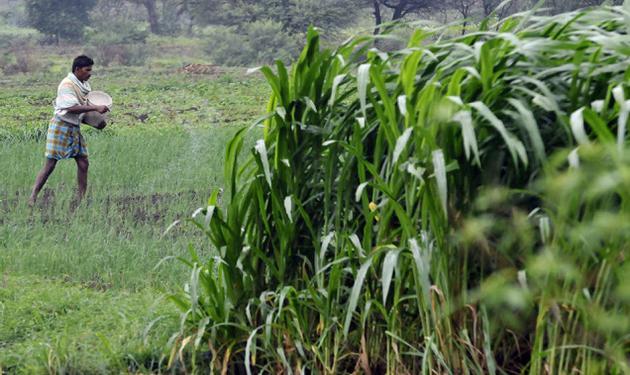December 10, 2012
Hyderabad: Paddy farmers in Andhra Pradesh are going to have a tough time in rabi season too. Lack of water in all the major reservoirs and severe shortage of power will make it difficult for the farmers to go for water-intensive paddy crop this time.

December 10, 2012
Hyderabad: Paddy farmers in Andhra Pradesh are going to have a tough time in rabi season too. Lack of water in all the major reservoirs and severe shortage of power will make it difficult for the farmers to go for water-intensive paddy crop this time.

Switching over: Farmers in all the regions in the State have been advised to raise maize and sunflower as alternative crops for rice as the groundwater availability is turning scarce.
The Government officials have been advising the farmers to shun paddy this time and go for maize and other crops that require less water.
The sowing patterns so far clearly indicate a steady growth in the non-paddy crops. Paddy was sown in 88,000 hectares, just 50 per cent of the normal figure of 1.76 lakh ha. This is less than the last year’s position of 1.27 lakh ha. The State grows paddy in 15 lakh ha in the rabi season.
“Farmers in all the regions in the State are advised to raise irrigated maize and sunflower as an alternative rice as the groundwater turning scarce,” an official of Ministry of Agriculture said.
Yerneni Nagendranath, President of Farmers’ Federation of Andhra Pradesh, admits that the season was not favourable to grow paddy. “The Government has been claiming that it will give power for seven hours. But going by the availability, it is unlikely that we get not more than four hours. So, it is good for farmers either to avoid paddy or reduce the acreage in proportion to the availability of water and power,” he told Business Line on Sunday.
The Government had not released water under Nagarjunasagar and Sriramsagar in the kharif season. This situation is likely to continue in the rabi season too, if the levels in the reservoirs are any indication.
The storage level at Nagarjunasagar stands at 162 tmc (thousand million cubic feet ) as against 182 tmc recorded last year. The Sriramsagar reservoir reports 50 tmc (66 tmc).
Courtesy: Hindu







































































































